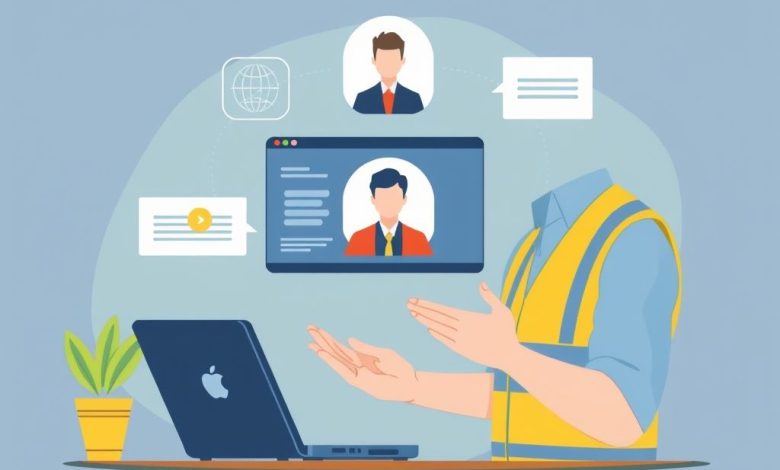Field Service Management with Real-Time Video Calls Revolutionizing Remote Support and Customer Interaction

Field Service Management with Real-Time Video Calls
Introduction
In today’s fast-paced business environment, field service management has become increasingly crucial for companies operating in various industries. The traditional model of sending technicians to customer locations for repairs and maintenance has evolved with the advent of technology. One such innovation that has revolutionized the field service industry is real-time video calls. This technology allows customers and technicians to interact remotely, enhancing efficiency, reducing costs, and improving overall customer satisfaction.
This article will explore the concept of field service management with real-time video calls, its benefits, challenges, and best practices. We will delve into how this technology is transforming the way businesses operate and how it can be effectively implemented to improve service delivery.
Benefits of Field Service Management with Real-Time Video Calls
Real-time video calls have introduced several advantages to field service management:
- Improved First-Time Fix Rates
By allowing technicians to visually inspect equipment before arriving at the site, first-time fix rates have significantly increased. Technicians can identify potential issues and prepare necessary tools and parts beforehand, leading to more efficient resolutions. - Reduced Travel Time and Costs
With remote diagnostics possible through video calls, the need for unnecessary site visits is eliminated. This reduction in travel time and associated costs directly impacts the bottom line of service-based businesses. - Enhanced Customer Experience
Customers appreciate the ability to communicate directly with technicians, ask questions, and receive immediate feedback. This transparency builds trust and satisfaction with the service provider. - Increased Efficiency
Technicians can multitask during video calls, preparing solutions while discussing issues with customers. This parallel processing leads to faster resolution times and improved productivity. - Access to Expertise
Companies can leverage remote experts to assist less experienced technicians, ensuring high-quality service delivery across all levels of staff.
Challenges in Implementing Real-Time Video Calls
While the benefits of real-time video calls in field service management are substantial, there are also challenges to consider:
- Technical Issues
Connectivity problems, poor video quality, or difficulties with screen sharing can disrupt the workflow and frustrate both customers and technicians. - Data Privacy Concerns
Ensuring secure transmission of sensitive customer data during video calls is critical. Businesses must implement robust security measures to protect against unauthorized access or breaches. - Cultural Barriers
Language barriers or cultural differences may affect communication effectiveness during video calls, potentially leading to misunderstandings or misinterpretations. - Equipment Limitations
Not all customers may have access to devices capable of supporting high-quality video calls, which could limit the effectiveness of this technology. - Training Requirements
Both customers and technicians require training to effectively use video call technology, which can be time-consuming and costly.
Best Practices for Implementing Real-Time Video Calls in Field Service Management
To maximize the benefits of real-time video calls in field service management, consider the following best practices:
- Invest in High-Quality Equipment
Ensure both technicians and customers have access to reliable, high-resolution cameras and stable internet connections. - Develop Clear Communication Protocols
Establish standardized procedures for initiating, conducting, and concluding video calls to maintain consistency across all interactions. - Implement Robust Security Measures
Utilize end-to-end encryption and other advanced security features to protect sensitive customer data during video calls. - Provide Comprehensive Training
Offer thorough training sessions for both technicians and customers to familiarize them with the video call system and best practices for effective communication. - Continuously Monitor and Improve
Regularly assess the performance of the video call system and gather feedback from users to identify areas for improvement and optimize the process.
Conclusion
Field service management with real-time video calls represents a significant shift in how businesses deliver services to customers. By leveraging this technology, companies can enhance operational efficiency, improve customer satisfaction, and reduce costs. However, it’s crucial to address the challenges and implement best practices to ensure successful integration.
As the field service industry continues to evolve, we can expect further innovations in remote collaboration technologies. The future of field service management likely lies in a combination of AI-powered diagnostic tools, augmented reality overlays, and seamless integration of physical and virtual support channels.
For field service managers looking to stay ahead in this rapidly changing landscape, embracing real-time video calls as part of a comprehensive service strategy is not just beneficial—it’s essential for long-term success in the competitive world of field service management.




